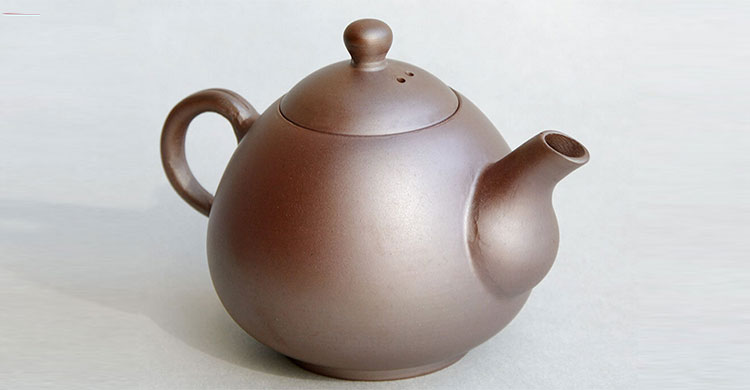Hi everyone how are you doing? Today’s subject is “Tōjiki (Ceramics) Part2” that would be versatile everywhere.
So let’s begin with the history of the utilitarian “Japanese yakimono” (pottery, earthenware, porcelain)that can be said to be one of the best well-known in the world.
These earthernwares are considered to be the oldest ones that are found in Aomori-prefecture.
About 16,000 years ago in Aomori-prefecture, Japan, pottery which is said to be the oldest in the world has been found, which means Japanese pottery has the longest history in the world.
There is, however, older history of pottery found in China in about 20,000 years ago, according to some historians.
However, it can be said that the history of Japanese pottery later grew under the influence of China and Korea.
At the same time, in the middle of the 4th – 5th century AD (Asuka period), the kiln was transmitted from the Korean technician.
Contents
Why has Japanese pottery,Tōjiki (Ceramics) been so famous?
Ceramics in Japan has a long history, stretching over 12,000 years.
The Japanese archipelago is abundantly supplied with the raw material for ceramics, and an appreciation for clay and its multitude of possible uses has been a steady force in Japanese culture for millennia.
In the development of ceramic materials, China was the great innovator, and all of Japan’s advance technology came directly or indirectly from there, more often than not, China also set the style.
Yet also typical of Japan’s attitude toward ceramics was the fact that, while newer wares representing advanced technology might be accorded a positon of highest status, they by no means obliterated existing wares and techniques, which for the most part continued unaffected.
As a result, Japanese ceramics became steadily richer in variety, and the ceramic articles produced in Japan today cover the full range from earthenware directly descended from neolithic precedents to the most demanding Chinese-style glazed ware.
Glazed ceramics
By the Nara period(710-794) continental ceramic technology had been introduced, intetional glazing of high-fired wares. Production of lead-glazed wares began at kilns in or around the modern city of Nara.
Plain green-glazed pieces were being made by the late 7th century, and polychrome plazes were added by the early 8th century.
These early Nara wares, produced under govenment control, include three-colour wares-usually green, white, and yellowish brown-called sansai tōki.
Duplication of the celadon technology occured with the development at the Sanage Kilns(in the vicinity of modern Nagoya) of a feldspathic glaze applied to a high-fired gray or white body. Sanage received direct support from the Heian court.
By the end of the 12th century, however, most central Sanage kilns were making only the unglazed, popular tablewares. A movement from eastern Sanage toward better souces of white, kaolin-like clay let to the establishment of a new center for glazed ware in Seto in Aichi Prefecture.
Medieval ceramics
Under the patronage of the Kamakura shogunate(1192-1333) and Zen temples, Seto began by copying newly introduced Southern Song(1127-1279)Chinese forms-four-eared jars, flasks, ewers-with amber or green ash glaze applied over carved, stamped, or sprigged designs.
By the 14th century Seto had also perfected use of the oron-brown temmoku glaze inspired by brown-glazed teabowls brought back from China.
Seto kilns reached their peak in the mid-15th century. The center for glazed wares shifted to Mino(now part of Gifu Prefecture). Efforts to imitate porcelains from Ming(1368-1644)China led to the development of the opaque, white feldspathic glaze with underglaze iron decoration that became popular as Sino ware late in the 16th century.
Although glazed as well as unglazed wares continued to be produced at Seto, Mino and other medieval kilns, from the 12th through the 16th century the principal Japanese ceramic product was a sturdy, unglazed stoneware, called sekki, that was made in a limited set of shapes primarily for utilitarian storage.
The most important kilns to produce this type of stonewware were those at Tokoname.
With the growing commercial significance of ceramics in the Muromachi period(1333-1568), when unglazed stonewares in particular emerged as valuable sources of cahs income, potters became more professional as output increased.
Beginning with tea jars, everyday wares began to be glazed, resulting in further improvements in kiln structure. Mino potters were most influential in dispersing glazing technology to stoneware kilns.
Nevertheless, the same kilns that were striving to develop glazes were also influenced by the interest of the tea masters in unglazed pieces (particularly in ceramics imported from Southeast Asia, known as namban ware)for use as tea ceremony vessels.
This interest reflected an increasing appreciation of simplicity and rusticity, aesthetic values that came to a peak in the tea ceremony school founded by Sen no Rikyu(1522-1591).
Bizen produced the outstanding early pieces in this mode. Around 1600 the conscious manipulation at the Iga kilns of the features of ungalzed medieval stonewares, including “natural” ash glace, represented the epitome of the artificaila naturalism espoused by many tea ceremony adherents.
Edo-period ceramics
The Edo period(1600-1868) saw a continuation of innvative stylistic and technological developments in stonewares and in glazed and unglazed ceramics.
Japan’s invasions of Korea in 1592 and 1597 gave military leaders the opportunity to bring Korean potters, with their superior skills of throwing and glazing, to Japan to work in their domains.
The introduction from Korea of the noborigama(climbing kiln) revolutionized the firing of stonewares and made possible the successful firing of porcelain after suitable clays were discovered in the Arita area of northern Kyushu by Korean potters in the early 17th century.
By the mid-17th century a crucial influence was added in the form of the European market. The Dutch East India Company not only placed enormous orders but also provided models and directions for what was wanted in Europe.
Special preference was accorded an Arita-produced decorated ware called Kakiemon ware, which was characterized by application of polychrome enamels and undergaze cobalt to a mild-white porcelain body.
The second half of the 17th century saw the full flowering of such decorated wares. Colourful Imari ware and Kakiemon ware were shipped to Europe from Kyushu in great quantities, the finer Kakiemon and Nabeshima ware porcelains were reserved for local rulers.
In Kyoto, a poplular form of decorated earthenware or stoneware known as kyou-yaki was developed by such potter-decorators as Nonomura Ninsei(mid-17th century)and Ogata Kenzan(1663-1743).
Only isolated bentures, such as Kutani ware, attempted the production of porcelain in competition with the dominant kiln in Arita.
Modern ceramics
The opening of Japan to the West brought new opportunities for ceramics export and the development of porcelain centers at Kyoto and Yokohama.
Through the work of the German technician in Arita, Kyoto, and Tokyo and through Japanese participation in international expositions in Europe and the United States, Western ceramic technology and taste were introduced.
Contemporary Japanese ceramics may be said to have begun shortly after 1900 with the emergence of the “studio potter” with an individual name and style.
The studio potter of the 20th century came to ceramics by choice rather than by birth, and the typical eclectic style was based on a strong knowledge of Japanese ceramic history. Itaya Hazan(1872-1963), for example, was trained as a sculptor, and Kitaoji Rosanjin(1883-1959) began making pottery to supply his own gourmet restaurant.
From 1926, the Folk Craft Movement led by Yanagi Muneyoshi(1889-1961) began to foster interest in the aesthetic value of traditonal craftwork and skillfully made simple objects of daily use-among them ceramics.
The potters Kawai Kanjiro(1890-1966) and Hamada Shpoji(1894-1978) participated in this movement, and it was through the latter, who established his workshop in Mashiko in Tochigi Prefecture, that the town became famous as a center of folk-style pottery. Many foreign potters have studied in the town.
Wouldn’t you like to have a try?
At the end, we have another blog of “Unveiling the Art of Tojiki(Ceramics): Exploring the Distinctive Traditions of Japanese Pottery“, if you haven’t browsed yet, you’ll see it enough worth visiting it.

















